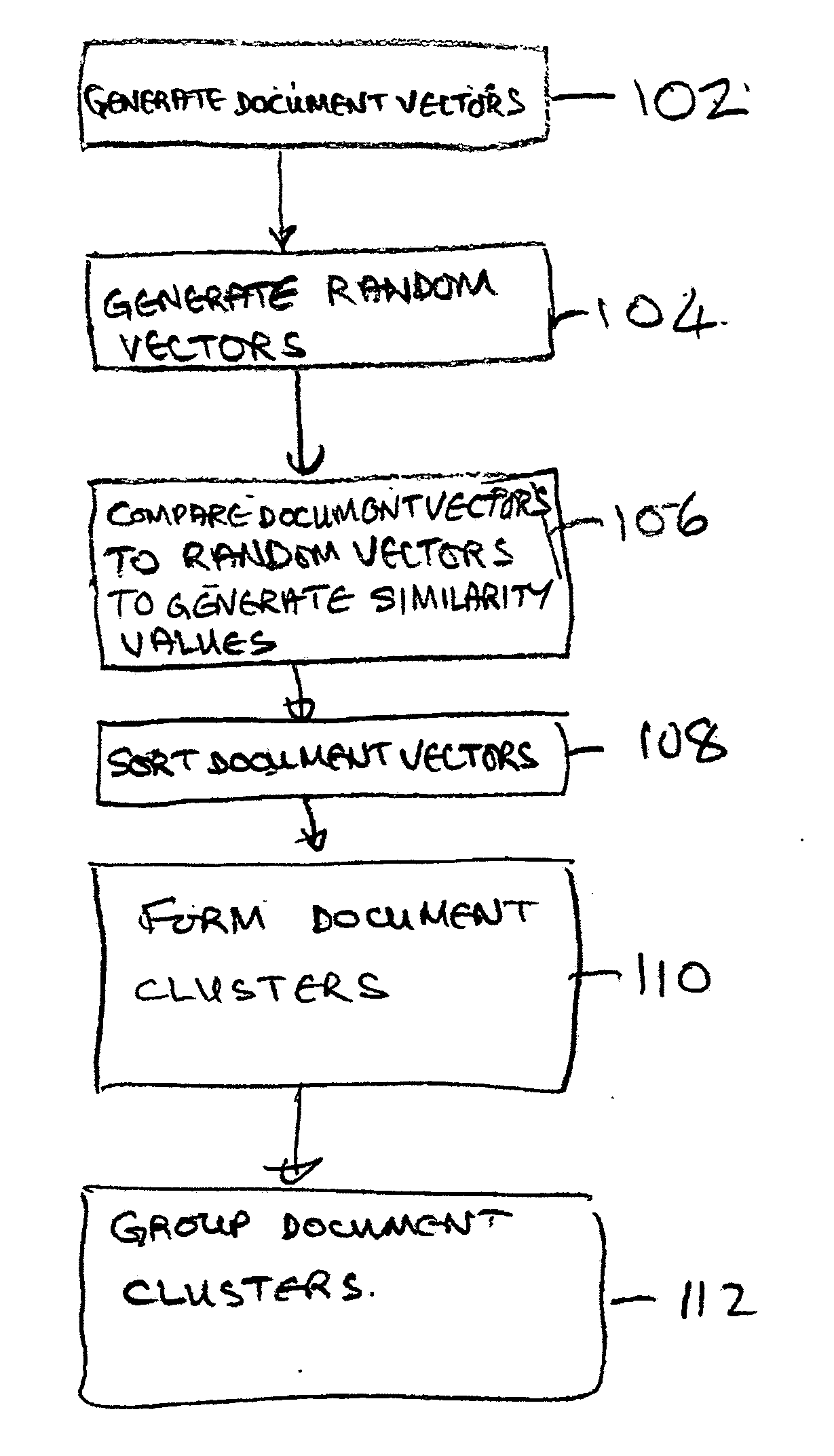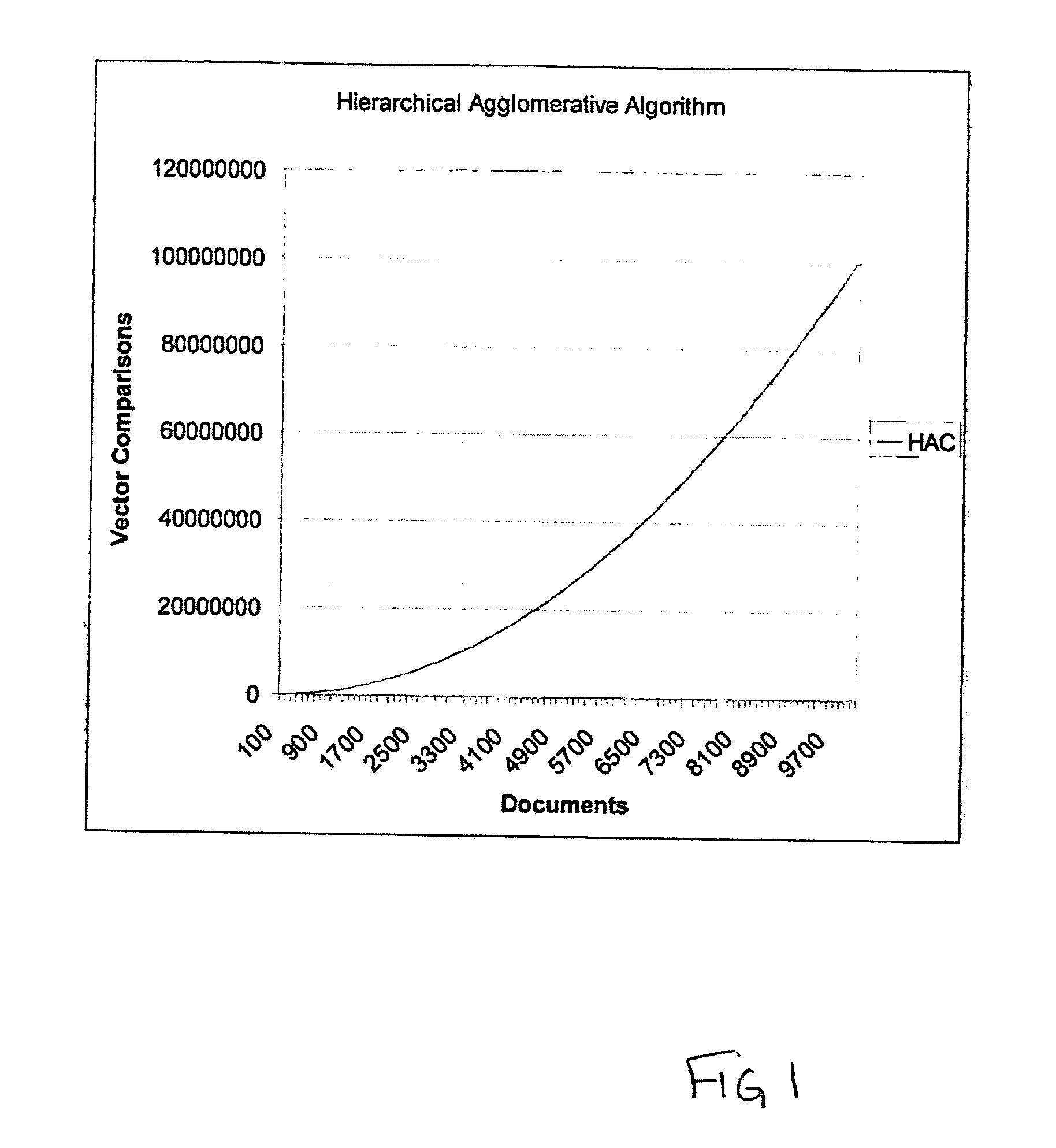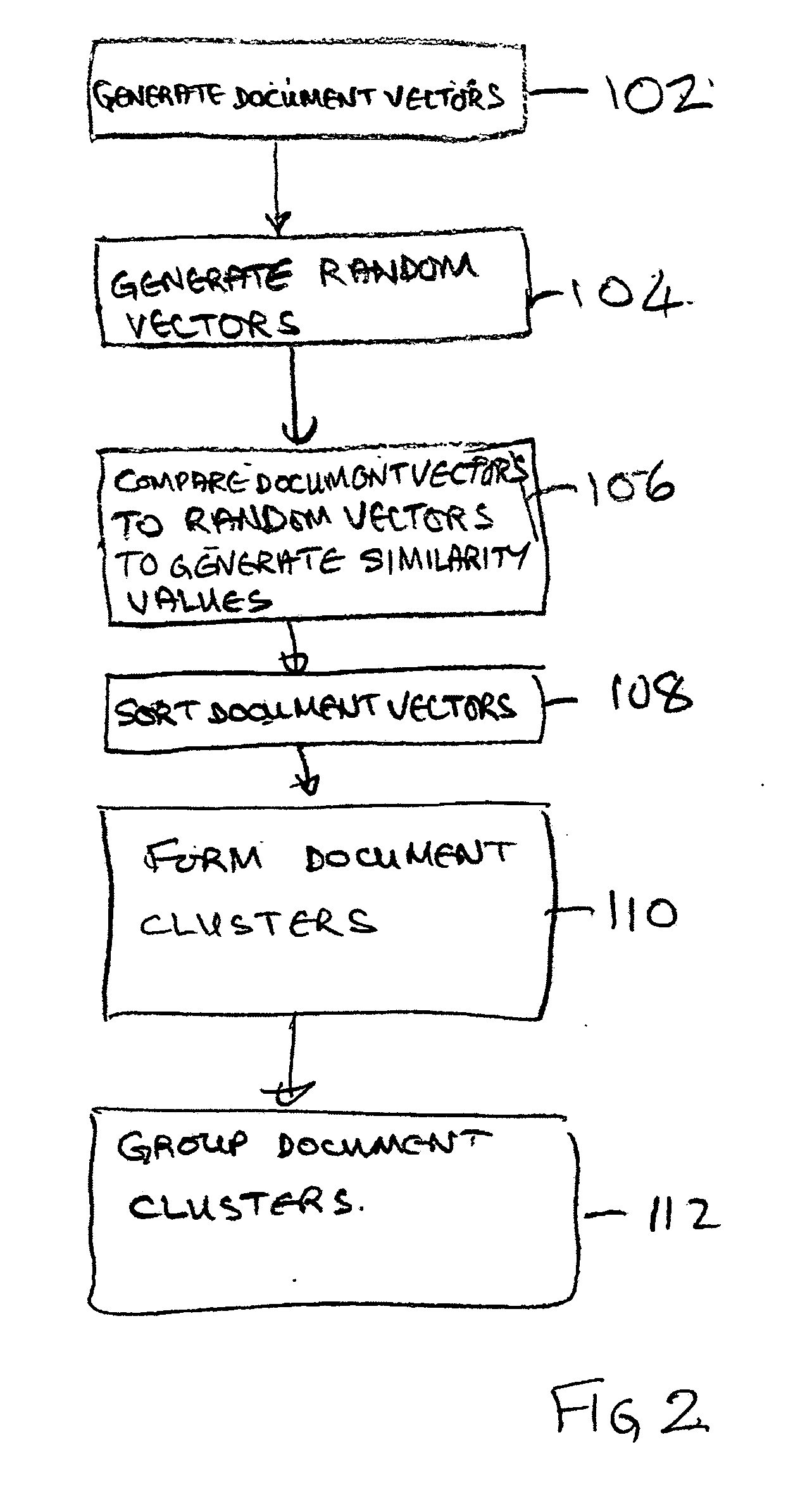Clustering system and method
a clustering system and clustering technology, applied in the field of document analysis, can solve the problems of high computational cost of techniques, exponentially increasing the number of required document comparisons, and the k-means algorithm is not very useful, and achieves the effects of less computational cost of clustering operations, less computational cost, and high computational cos
- Summary
- Abstract
- Description
- Claims
- Application Information
AI Technical Summary
Benefits of technology
Problems solved by technology
Method used
Image
Examples
Embodiment Construction
[0030]This invention provides a new system and method for unsupervised clustering of a large number of unformatted text documents by analyzing the content similarity. An embodiment of the invention can provide for fast and scalable auto-clustering thousands of documents in linear time.
[0031]Unsupervised clustering algorithms are extremely useful when trying to group data based on unknown patterns in the content. This is very complex and CPU intensive when the algorithm must group a large number of text files or emails.
[0032]Unsupervised clustering algorithms, such as Hierarchical Agglomerative Clustering algorithm (HAC), are very memory and CPU intensive. The complexity of these algorithms rises exponentially with the number of documents to be processed. Auto-clustering N text documents requires building a table of N*(N−1) similarity values between documents.
[0033]The comparison between documents is normally based on the cosine distance between two document's Term Frequency Vectors,...
PUM
 Login to View More
Login to View More Abstract
Description
Claims
Application Information
 Login to View More
Login to View More - R&D
- Intellectual Property
- Life Sciences
- Materials
- Tech Scout
- Unparalleled Data Quality
- Higher Quality Content
- 60% Fewer Hallucinations
Browse by: Latest US Patents, China's latest patents, Technical Efficacy Thesaurus, Application Domain, Technology Topic, Popular Technical Reports.
© 2025 PatSnap. All rights reserved.Legal|Privacy policy|Modern Slavery Act Transparency Statement|Sitemap|About US| Contact US: help@patsnap.com



